

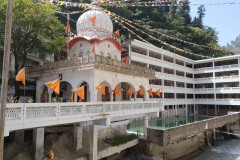
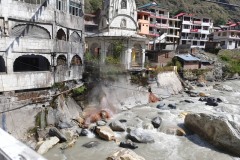

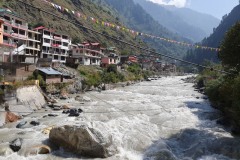


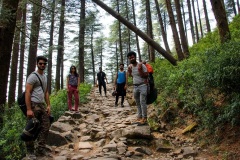
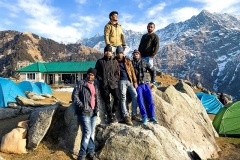
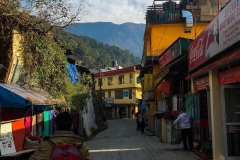

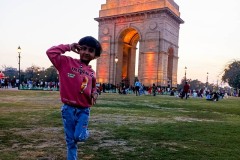
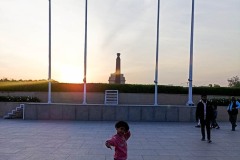
Situated on the outskirts of Kangra town and around 22 km from Dharamshala, Kangra Fort is one of the most well-known sights in the Kangra district. The fort is defended by tall walls and ramparts and covers an area of about 4 km. The Banganga and Patal Ganga rivers meet at the foot of the hill where Kangra Fort is situated. Several dynasties’ emperors have created a large number of the fort’s doors. Ranjit Singh Gate is the name given to the stone-carved gateway to the fort.
Jahangiri Darwaza is the next door to enter the fort, followed by Ahni and Amiri Darwazas. The Ambika Devi Temple, the Shitlamata Temple, and the Lakshmi Narayan Temple are the three temples located inside the fort. A stone picture of Lord Adinath is located at a temple honoring the Jaina Tirthankaras. Between the temples of Shitlamata and Ambika Devi is a staircase that leads to the Sheesh Mahal. There, a polygonal guard tower is situated at the edge of a small compartment that resembles a hall. The remnants of a former mosque can be seen while touring the area of the palace that faces Andheri Darwaza. Kangra Fort’s stepwell, known as Kapoorsagar, is another important feature. It is said that the oldest fort in Himachal Pradesh is Kangra Fort.
Kangra Fort is best visited between September and June. September through November is the best time to tour the Kangra Fort, go sightseeing, and see all the major temples. For hikers and trekkers, the moderate and pleasant temperature range of 22 to 30 degrees Celsius is maintained over the May to June summer months.
But the winter months—January in particular—are usually excessively chilly, with occasional lows below zero. It would be wise to stay away from the winter months if you are sensitive to frigid temperatures.
The Kangra Fort was constructed probably in the 4th century BC by the Katoch dynasty. Several emperors attempted to take control of the fort over the ages. Those who were successful looted its temples of precious artifacts. Several notable historical individuals, including Mahmud Ghazni and the Mughal Emperor Jahangir, vied for control of the fort. Jahangir took possession of the fort in 1621 following a 14-month siege. He constructed a mosque inside the fort as well.
However, the Mughals lost their ancestral fort, which was reclaimed by Katoch King Raja Sansar Chand II in 1789. He engaged Maharaja Ranjit Singh and the Gurkhas in ceaseless combat to maintain control of the fort. After Ranjit Singh passed away in 1828, he obtained the fort. Up to the Kangra earthquake of 1905, the British held the Kangra fort after winning the First Anglo-Sikh War.
Location: The Kangra Fort is situated in the Himachal Pradesh region of Kangra, specifically in Old Kangra. From Dharamshala, it takes roughly 40 minutes or 20 kilometers by car.
Cost: An audio guide is included in the admission cost of Rs. 150 per person for Indians. It costs Rs. 300 per person with audio guide for foreigners.
Timings: Monday through Sunday, 9 AM to 5:30 PM.
The closest airport to Kangra Fort is Gaggal Airport, which is only 14 kilometers from Kangra Valley. Delhi is connected to this airport via regular flights.
The closest narrow gauge railway station is Kangra Mandir Railway Station, located 87 kilometers from Kangra, and the closest broad gauge railway station is Pathankot Cantt. Additionally, you can use direct busses or hire a cab.
There are 470 kilometers separating Kangra and New Delhi. You have two options for getting to your destination: direct cab service or overnight Volvo buses.